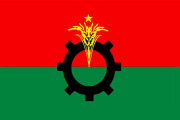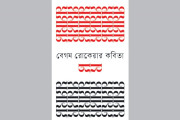BSS/AFP: Investors pushed most Asian markets higher Friday on easing concerns about runaway inflation and an overheating economy after the Federal Reserve officials brought forward their forecasts for hiking interest rates.
With the post-pandemic recovery well under way in most countries as vaccines roll out and containment measures are eased, the general mood across trading floors is positive and observers are predicting equities will continue the rally that started in April 2020.
The blockbuster growth enjoyed this year has been tempered by worries that a surge in buying spurred by pent-up demand for goods would combine with supply constraints and bottlenecks to send prices rocketing.
That, in turn, had raised concerns central banks would either have to tighten their ultra-loose monetary policies earlier than flagged or would move too slowly and let inflation run out of control, forcing them to hike rates at a sharper, quicker pace.
After Wednesday’s Fed meeting, officials’ “dot plot” forecast for rates showed they were now more likely to lift in 2023 — a year earlier than first suggested — soothing worries about runaway prices, for now. Some policymakers had projected lift-off as soon as 2022.
While higher borrowing costs make investing more costly, markets took the prospect of a hike largely in their stride, and Wall Street ended Thursday mixed.
Asia mostly rose, with Tokyo, Hong Kong, Sydney, Seoul and Wellington in positive territory. Shanghai was flat, while Singapore, Taipei, Manila and Jakarta were only slightly lower.
“What we are seeing here is an interpretation that economic growth is improving and inflation is accelerating; historically both of those are positive for areas like the Nasdaq, tech stocks and even small caps,” Dave Mazza, of Direxion, said.
“Once we peel the onion a bit, what we are seeing in the data, all of this is generally positive for the economy.”
The prospect of higher rates also sent the greenback rallying across the board and it maintained its strength Friday in Asia.
But that, in turn, has weighed on dollar-priced commodities, with oil taking a hit over the past two days while metals have tumbled from recent record or multi-month highs.
“There can be no doubt that the froth has well and truly been blown off many commodity markets,” said National Australia Bank’s Ray Attrill.
“Yet if the global (growth) reflation trade is still very much intact, it is hard to envisage that commodity prices overall are not going to remain strong as we go through the second half of 2021 and into 2022.
“Remember too, China will need a lot of commodities to service this demand from the rest of the world.”
And gold, a key go-to asset in times of high inflation, has also taken a hit, sinking more than five percent since Wednesday to a three-month low.
– Key figures at 0230 GMT –
Tokyo – Nikkei 225: UP 0.3 percent at 29,107.98 (break)
Hong Kong – Hang Seng Index: UP 0.5 percent at 28,707.71
Shanghai – Composite: FLAT at 3,525.21
Dollar/yen: UP at 110.23 yen from 110.18 yen at 2100 GMT
Euro/dollar: UP at $1.1913 from $1.1912
Pound/dollar: UP at $1.3941 from $1.3922
Euro/pound: DOWN at 85.46 pence from 85.54 pence
West Texas Intermediate: DOWN 0.7 percent at $70.52 per barrel
Brent North Sea crude: DOWN 0.8 percent at $72.48 per barrel
New York – Dow: DOWN 0.6 percent at 33,823.45 (close)
London – FTSE 100: DOWN 0.4 percent at 7,153.43 (close)










































































































































































